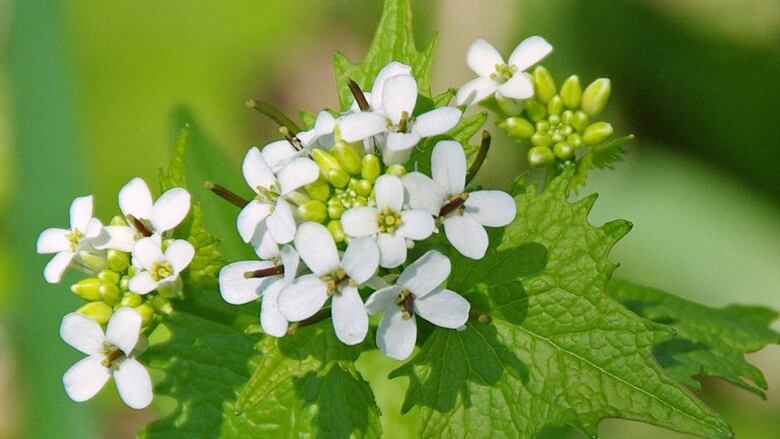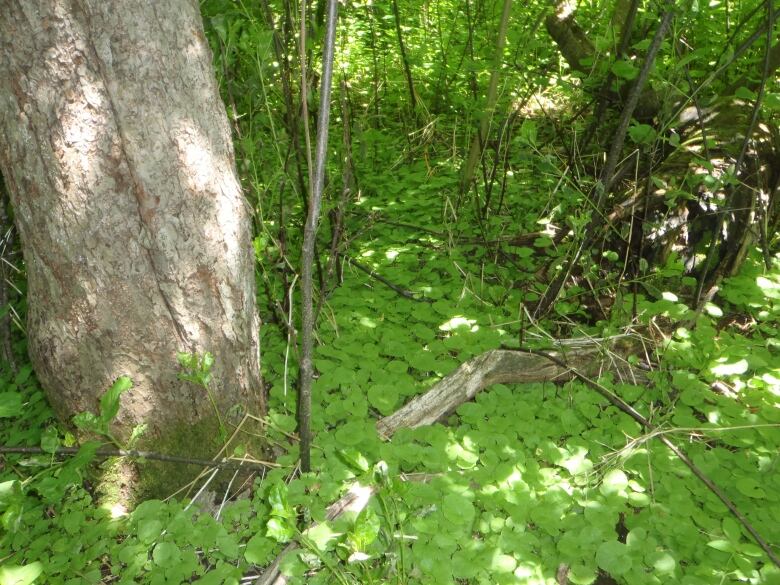Meet the 'pretty little plant' that wants to take over Cavendish
'It's very harmful to the forest, which is our main concern'

Garlic mustard sounds delicious and it very well may be but on P.E.I. it is a stubborn and fast-spreading invasive plant species that Parks Canada has been trying to get rid of unsuccessfully for more than a decade.
Parks Canada discovered the plant inside the P.E.I. National Park in Cavendish in 2004 as part of a regular vegetation survey, and put a program in place in 2007 to actively fight it.
We just don't want it to get any bigger. Linda Thomas
"We managed it at that point and we were kind of surprised it was there," saidLinda Thomas, a resource conservation officer who also sits on P.E.I.'s Invasive Species Council.
Size quadrupled in last decade
Since then despite the best efforts of staff, the size of the garlic mustard patch has quadrupled.
This year the park measured about 850 square metres of the plant, which was an improvement on last year's 1,600 square metres. It has also been found on private land in a couple of other P.E.I. locations.

"It's a pretty little plant actually it's a biennial, which means ittakes two years to mature and produce seeds," Thomas said. Eradicating the plant is very difficult since those seeds can live for 12 years, she said.
"It's a very localized area and that makes it more important in our eyes to keep it there, not let it spread anyfurther and reduce it or eradicate it as we can," she said, noting the patch ranges from the golf courses to Cavendish Grove, the old Rainbow Valley site, she said.
Parks has tried every year to get rid of the plants in late June before they produce seeds.
"The method of control is simply pulling, so it's labour-intensive to control it," Thomas said.
"Our students, it's not their favourite job, but they spend a week or more just pulling garlic mustard all day," she said.
'Very harmful to the forest'
Officials are not sure how it got there, but Thomas said it was "likely introduced by humans," possibly via a seed on a person's shoes or gear. Most other provinces have the plant and it is prolific in Ontario, she said.
"It's very harmful to the forest, which is our main concern," she said. "It shades out everything that wants to grow on the forest floor." It also affects the fungi that grow in the soilwhich the trees need to grow, Thomas said.
They are optimistic they can eventually eradicate the plant, Thomas said, estimating it could take a decade. If not, they'd be happy to keep it contained, Thomas said.
"Diligence is the key, and detection," she said. "We just don't want it to get any bigger."
More P.E.I. news
With files from Laura Chapin












_(720p).jpg)


 OFFICIAL HD MUSIC VIDEO.jpg)
.jpg)



























































































